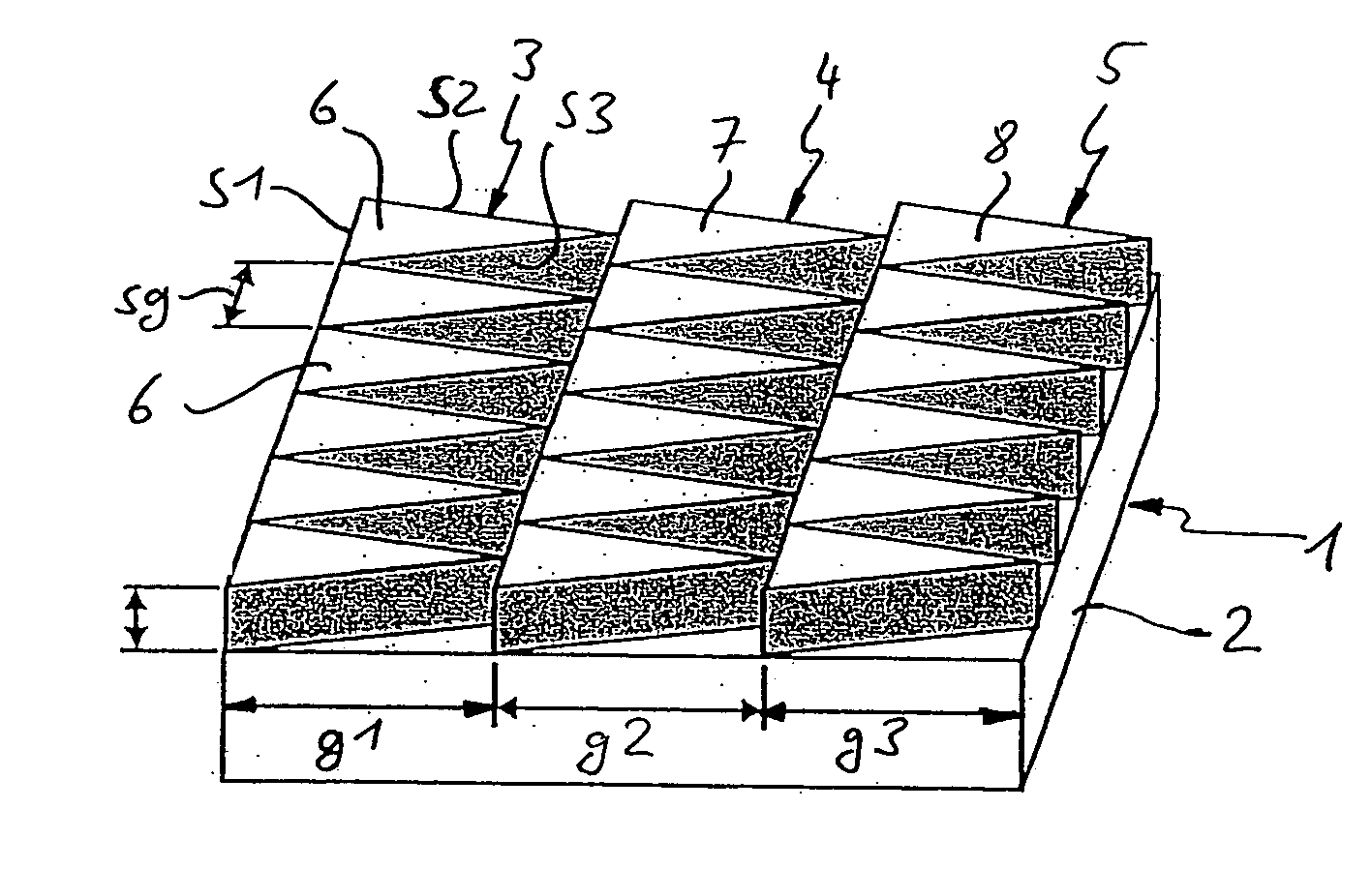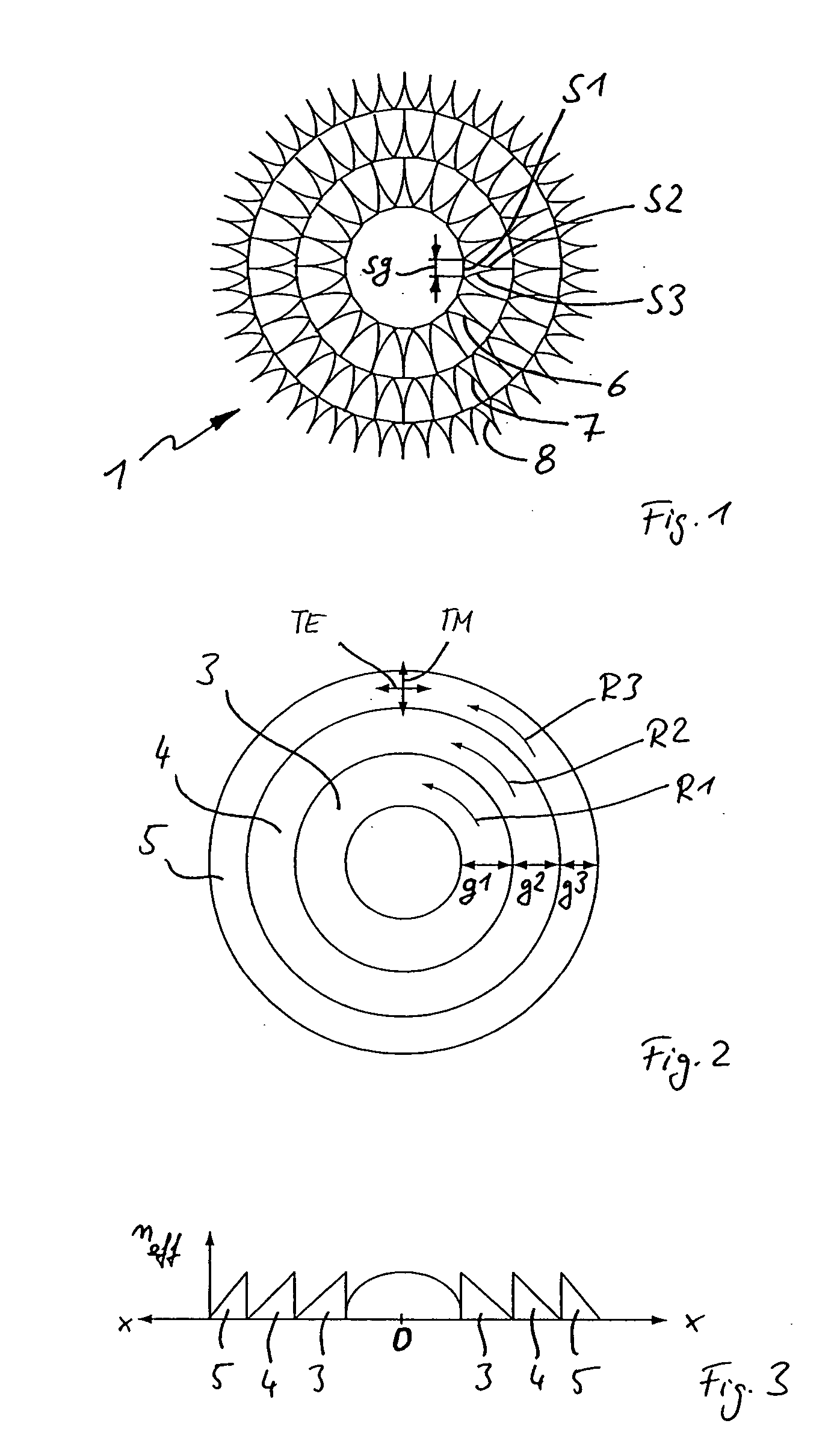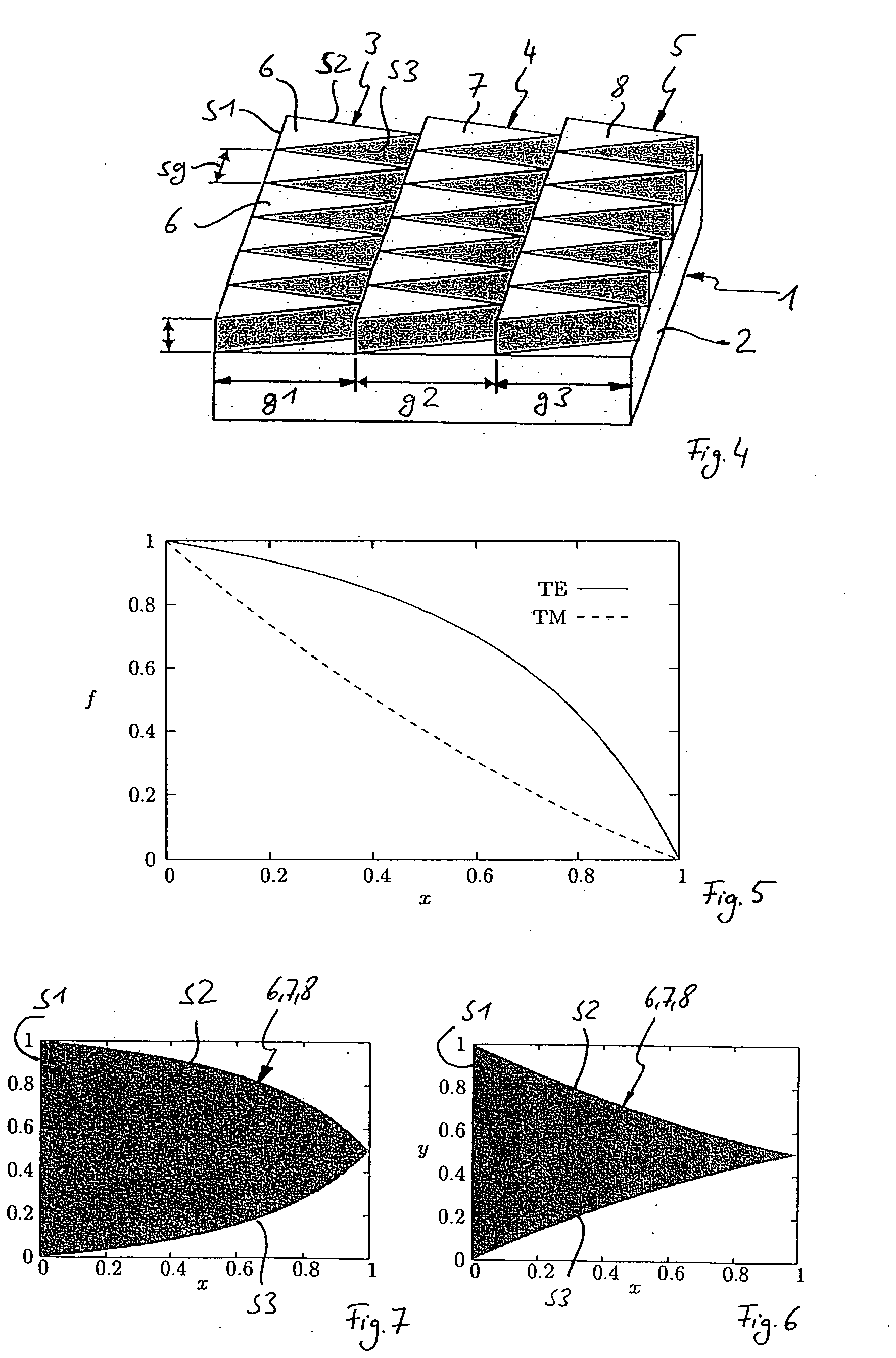Polarization-selectively blazed, diffractive optical element
- Summary
- Abstract
- Description
- Claims
- Application Information
AI Technical Summary
Benefits of technology
Problems solved by technology
Method used
Image
Examples
Embodiment Construction
[0046] The polarization-selectively blazed, diffractive lens 1 shown in FIG. 1 comprises a transmissive carrier 2 having a refractive index n1, as shown, in particular, in FIG. 4. A multiplicity of circular ring-shaped blaze structures 3, 4, 5 of the carrier material are arranged on the upper surface of the carrier 2, said structures having widths g1, g2, g3, which are respectively greater than the wavelength of the electromagnetic radiation for which the lens 1 is optimized.
[0047] Each blaze structure 3, 4, 5 comprises a multiplicity of individual substructures 6, 7, 8, each having a substantially triangular shape and consisting of a different material preferably having a higher refractive index than the carrier material. When viewed from above, the individual substructures 6, 7, 8 thus comprise a base S1, respectively arranged parallel to the direction of extension of the blaze structures 3, 4, 5 (i.e., in this case, in the circumferential direction R1, R2, R3), as well as two fu...
PUM
 Login to View More
Login to View More Abstract
Description
Claims
Application Information
 Login to View More
Login to View More - R&D
- Intellectual Property
- Life Sciences
- Materials
- Tech Scout
- Unparalleled Data Quality
- Higher Quality Content
- 60% Fewer Hallucinations
Browse by: Latest US Patents, China's latest patents, Technical Efficacy Thesaurus, Application Domain, Technology Topic, Popular Technical Reports.
© 2025 PatSnap. All rights reserved.Legal|Privacy policy|Modern Slavery Act Transparency Statement|Sitemap|About US| Contact US: help@patsnap.com



